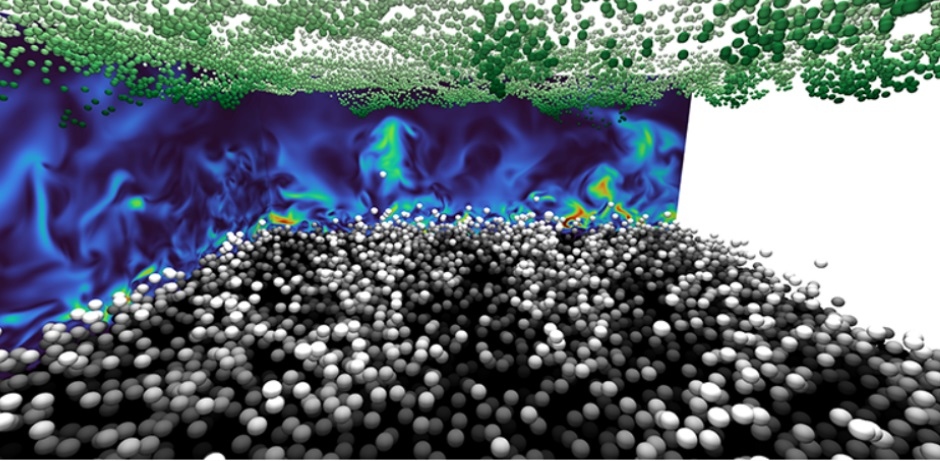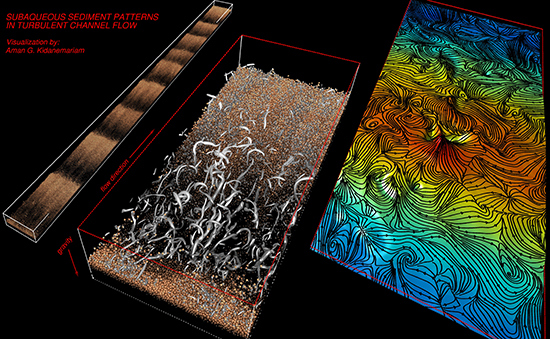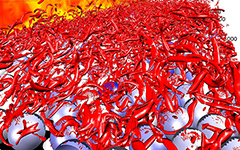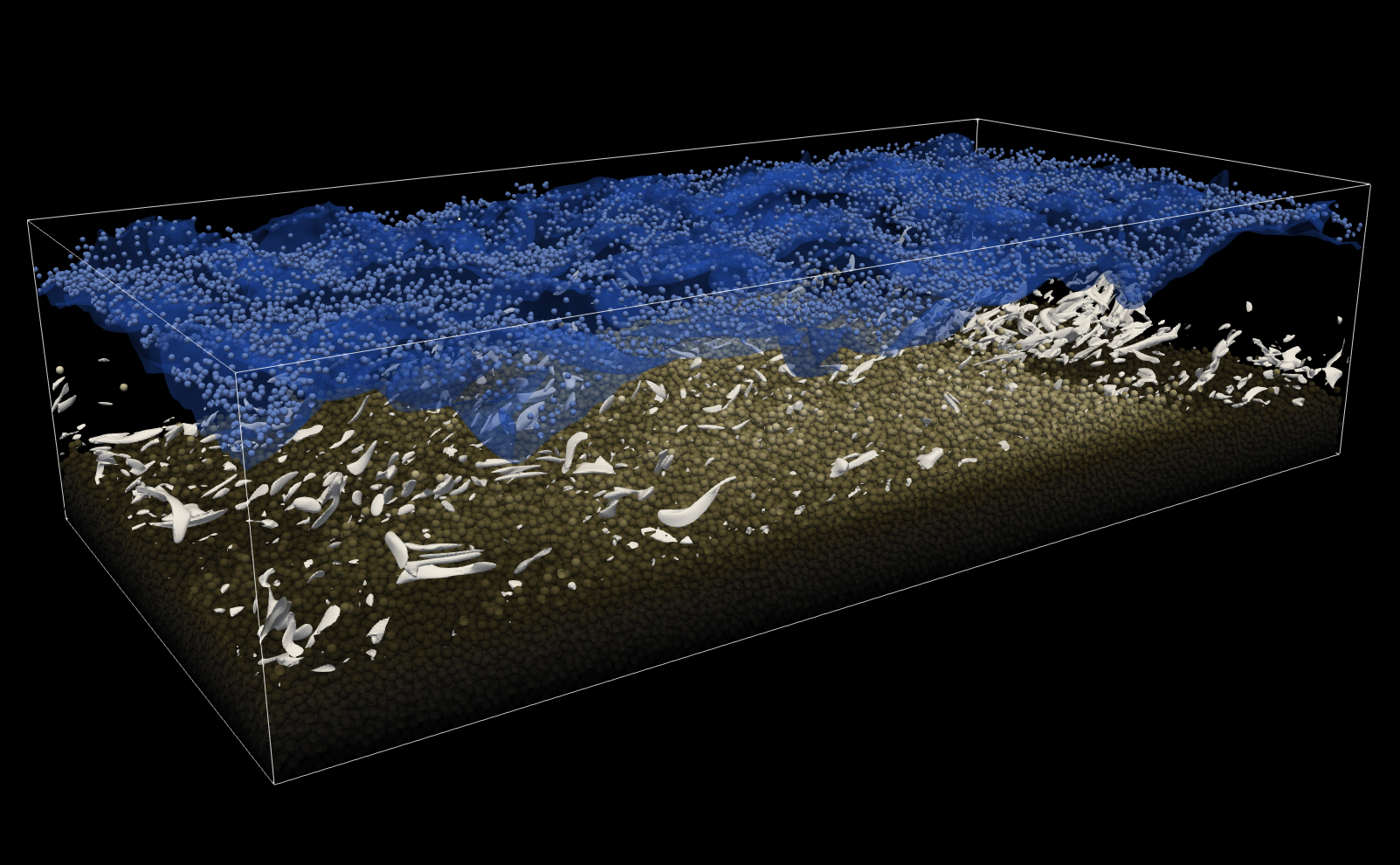
Using HLRS’s Hawk supercomputer, the NFM team conducted the first ab initio simulation — calculations that start from first principles — of the sediment pattern on a riverbed while also simulating settling contaminant particles from above, publishing its results in the Journal of Fluid Mechanics. The article was also selected to be the subject of an extended review and discussion by an acknowledged and invited expert in the field. This Focus on Fluids article explains the context, importance and implications of the underlying paper to a wider scientific audience, highlighting both the key findings and breakthroughs of the paper and the implications of the research for future activity.
The work also resulted in team member Markus Scherer being awarded an HLRS Golden Spike Award.

Every year the steering committee of HLRS chooses three particularly excellent projects to honor them with a special trophy: The HLRS Golden Spike Award. We are proud that Markus Scherer is among the winners 2021!
Markus received the Golden Spike Award for his project RIDGEWAV ("Secondary flow and longitudinal sediment patterns in turbulent channel flow over a bed of mobile particles in domains of small to intermediate size").
More

The MOAT project ("micro-organisms and turbulence") was awarded a massive amount of computational resources at the Stuttgart super-computing center HLRS through a highly-competitive selection process coordinated by the Gauss Center for Supercomputing (GCS).
The simulations consider the fate of bacteria in turbulent open channel flow over a realistic sediment bed, including a faithful representation of the dynamics of suspended particles and of additional scalar fields.

This project has investigated the problem of sediment transport and subaqueous pattern formation by means of high-fidelity direct numerical simulations which resolve all the relevant scales of the flow and the sediment bed. In order to realistically capture the phenomenon, sufficiently large computational domains with up to several billion grid nodes are adopted, while the sediment bed is represented by up to a million mobile spherical particles. The study provides a unique set of spatially and temporally resolved information on the flow field and the motion of individual particles which make up the sediment bed, providing novel insight into the different mechanisms involved in the processes of sediment pattern formation.
More
Open channel flow can be considered as a convenient "laboratory" for investigating the physics of the flow in rivers. One open questions in this field is related to the influence of a rough boundary (i.e. the sediment bed) upon the hydraulic properties, which to date is still unsatisfactorily modelled by common engineering-type formulae. The present project aims to provide the basis for enhanced models by generating high-fidelity data of shallow flow over a bed roughened with spherical elements in the fully rough regime. In particular, the influence of the roughness Reynolds number and of the spatial roughness arrangement upon the turbulent channel flow structure is being studied.
More







